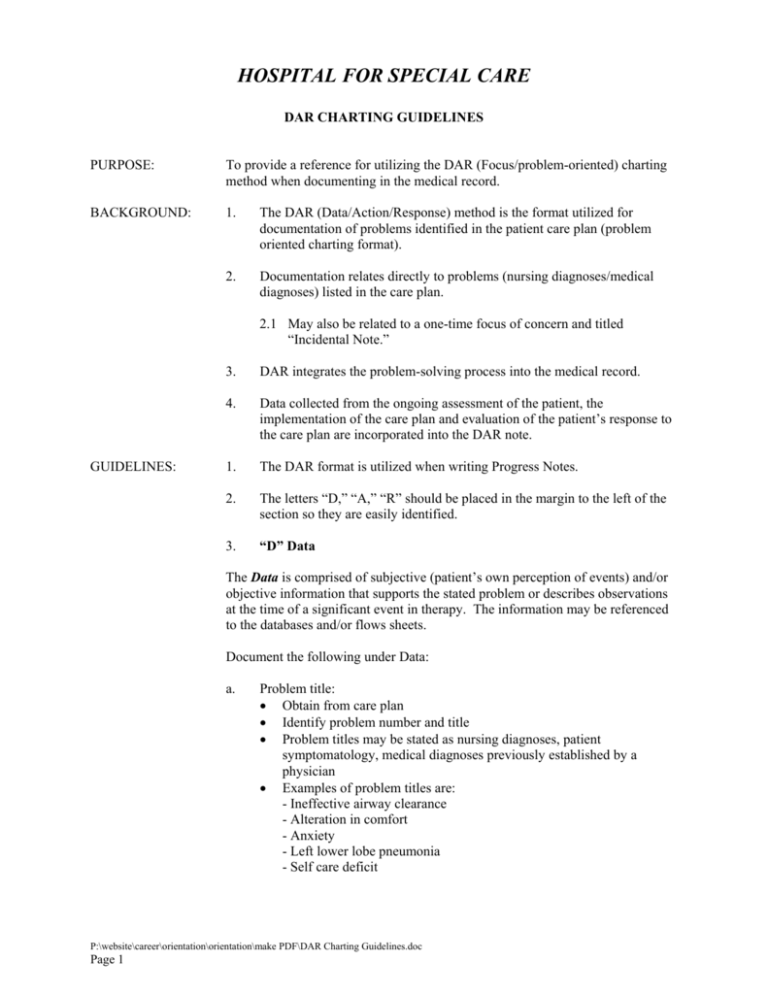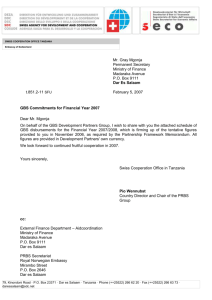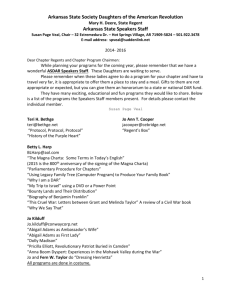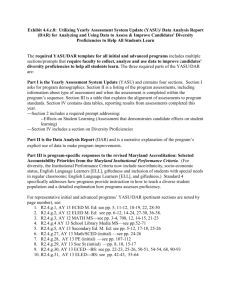DAR Charting Guidelines - Hospital for Special Care
advertisement

HOSPITAL FOR SPECIAL CARE DAR CHARTING GUIDELINES PURPOSE: To provide a reference for utilizing the DAR (Focus/problem-oriented) charting method when documenting in the medical record. BACKGROUND: 1. The DAR (Data/Action/Response) method is the format utilized for documentation of problems identified in the patient care plan (problem oriented charting format). 2. Documentation relates directly to problems (nursing diagnoses/medical diagnoses) listed in the care plan. 2.1 May also be related to a one-time focus of concern and titled “Incidental Note.” GUIDELINES: 3. DAR integrates the problem-solving process into the medical record. 4. Data collected from the ongoing assessment of the patient, the implementation of the care plan and evaluation of the patient’s response to the care plan are incorporated into the DAR note. 1. The DAR format is utilized when writing Progress Notes. 2. The letters “D,” “A,” “R” should be placed in the margin to the left of the section so they are easily identified. 3. “D” Data The Data is comprised of subjective (patient’s own perception of events) and/or objective information that supports the stated problem or describes observations at the time of a significant event in therapy. The information may be referenced to the databases and/or flows sheets. Document the following under Data: a. Problem title: Obtain from care plan Identify problem number and title Problem titles may be stated as nursing diagnoses, patient symptomatology, medical diagnoses previously established by a physician Examples of problem titles are: - Ineffective airway clearance - Alteration in comfort - Anxiety - Left lower lobe pneumonia - Self care deficit P:\website\career\orientation\orientation\make PDF\DAR Charting Guidelines.doc Page 1 GUIDELINES FOR DAR CHARTING (Cont.) b. Subjective data: Should be included, if pertinent, but is optional Data from patient’s perspective Something the patient and/or significant other tells you A direct patient quote Examples of subjective data: - “I can’t breathe” - “I’m scared” c. Objective data: Summary of pertinent physical assessment findings Brief review of interventions It is not necessary to duplicate routine aspects of care that are documented on the flow sheet Select pertinent objective data as identified in the expected outcome criteria section of the care plan Document any significant physical assessment findings Document patient’s response to medications, including abnormal reactions and the follow-up actions taken Education provided to the patient/significant other should also be summarized (describe what was actually taught.) Examples of objective data: - Restless, temp remains elevated, Tylenol given with minimum effect - Family members, (i.e., two daughters) oriented to unit routines, visiting hours. - Medicated X2 with Morphine IV for pain. Relief obtained as evidenced by verbalization of reduced pain, decrease in respiratory rate, less guarding. - See flow sheet-vital sign section 4. “A” Action The Action refers to the past, present or future nursing actions based on the assessment/evaluation of the patient’s condition. The action also includes evaluation of the present care plan and any changes required. The information may be referenced to protocols, flow sheets, care plans and teaching plans. Document the following under “A” Action a. b. c. d. e. f. The resulting plan for future interventions Must relate to identified problem and practice/interventions Should be specific to the individual patient’s needs If addition of a protocol in the care plan is made: it must be added to the intervention section of care plan. If no change of a protocol in the care plan: briefly mention the section of the care plan which relates to this problem. If discontinuation of a protocol occurs: it must be discontinued on care plan. P:\website\career\orientation\orientation\make PDF\DAR Charting Guidelines.doc Page 2 GUIDELINES FOR DAR CHARTING (Cont.) Examples of plan: - Continue with plan of care for this problem - Monitor effectiveness of 50% facemask - Increase lung sound assessment to every two hours - Discontinue problem 5. “R” – Response The Response describes the patient’s progress and response to therapy. The outcomes (goals) in the patient’s plan for that problem will be discussed. Document the following under Response a. b. c. d. Brief summary of patient’s current status An evaluation of patient’s response to the intervention that is directly related to the expected outcome criteria identified on the care plan This section should be scanned quickly by others and to assist in formulating an effective plan of care Statements should be specific – no general statements Examples of impressions: - Not maintaining effective breathing pattern - Family increasing knowledge of ICU routines - Adequate pain relief maintained 6. 7. 8. A DAR note may be written to address any changes, abnormalities, and responses to treatment that have occurred during the shift. 6.1 A DAR note is written to cover information not provided on any of the flow sheets. 6.2 If there is no other pertinent information available (other than flow sheet data), then a DAR note is not needed. Individual patient problems may be documented separately throughout the shift within problem-specific DAR notes. 7.1 If more than one problem is addressed within a DAR note, the information must clearly reflect the same sequence as the problems identified in the heading. 7.2 Combine “like” or related problems within the same note and present the information in an organized manner to facilitate clarity. Issues of concern that present for the first time and may not develop into problems may be documented under the heading of “Incidental Note.” P:\website\career\orientation\orientation\make PDF\DAR Charting Guidelines.doc Page 3 GUIDELINES FOR DAR CHARTING (Cont.) 8.1 9. If the concern persists, it should be formally added to the patient’s problem list. All notes must be dated, time of entry written, and signed by the team member providing the documentation. PATIENT POPULATION: All HSC Inpatients PERSON RESPONSIBLE: Licensed staff PLACEMENT IN CHART: Documentation within Progress Notes section REVISION: July 17, 2001 April 20, 2010 DISTRIBUTION: All units AUTHOR: Lisa Newton, MSN, RN, CS – Nursing Clinical Resource Consultant Lily Schleppy, RN, COU Clinical Manager Clinical Resource Consultants – Nursing COU Staff P:\website\career\orientation\orientation\make PDF\DAR Charting Guidelines.doc Page 4







